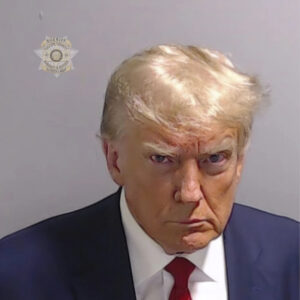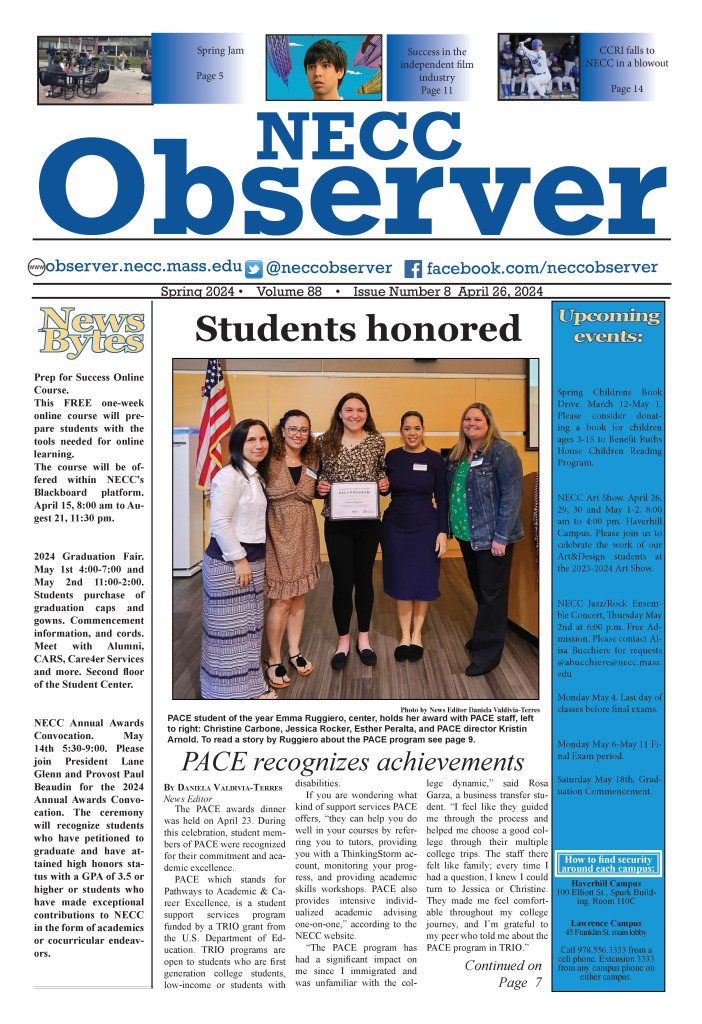
It’s a well-known fact that Donald Trump lied over 30,000 times in just the four years he was president. has consistently propagated falsehoods and misinformation about that crosses his mind and may be beneficial to him. We will look at just a sliver of some of the falsehoods he spreads.
The former president spread widespread lies about the 2020 election. Despite overwhelming evidence to the contrary, he continues to claim that the election was stolen from him. Here are the facts:
Joe Biden won the 2020 election decisively. He secured 306 Electoral College votes compared to Trump’s 232, and he received over 7 million more popular votes. Recounts and reviews in several battleground states confirmed Biden’s victory.
In Arizona, a thorough review of ballots in Maricopa County reaffirmed Biden’s win. In Georgia, where Trump was recently indicted for his efforts to overturn the election, state officials recertified Biden’s victory after conducting three statewide counts. Michigan’s Republican-led committee also found no widespread fraud in the state. These reviews consistently upheld Biden’s win.
Trump’s relentless spread of misinformation aims to undermine public confidence in the American electoral process. Unfortunately, it seems to be working recent polling shows that 57% of Republicans believe Biden was not legitimately elected.
Despite these facts, Trump’s false claims persist, perpetuating a dangerous narrative that threatens the foundation of democracy. It’s crucial to rely on accurate information and hold leaders accountable for their statements.
Trump falsely claimed that Nancy Pelosi caused the insurrection at the Capitol. This assertion has no basis. He also repeated the false claim that the rioters had “no guns” during the attack.
Trump was criminally indicted for his role in the events leading up to the Capitol storming. The charges include conspiracy to defraud the government, conspiracy against the right to vote, conspiracy to obstruct an official proceeding, and obstruction of an official proceeding. The indictment alleges that Trump repeatedly lied about election malfeasance, even when administration officials informed him otherwise.
The indictment highlights how Trump’s pervasive, and destabilizing lies about election fraud targeted the core function of the U.S. federal government—the process of collecting, counting, and certifying presidential election results.
During the January 6, 2021 Capitol riot, Trump claimed that there were no guns and that it was a peaceful protest. Jill Sanborn, assistant director of the FBI’s counterterrorism division, testified before a Senate committee that the FBI did not recover any guns during the incident. However, her statement needs context: she declined to speak for the D.C. Metropolitan Police Department or U.S. Capitol Police. While the FBI didn’t find guns, court documents reveal that some of the more than 430 people charged in connection with the riot brought guns onto Capitol grounds or stashed them away while staying in Washington.
Additionally, an internal report indicated that U.S. Capitol Police were ordered not to use weapons intended to disperse rioters during the attack. Despite the lack of widespread firearms, other weapons like clubs, pepper spray, bear spray, and flagpoles were used by rioters. The events of that day remain a critical moment in American history, emphasizing the importance of accurate information and accountability.
Throughout the course of the COVID-19 pandemic, former President Donald Trump made several statements that were fact-checked and found to be misleading or false. Here are some notable instances:
In the early days of the pandemic, Trump repeatedly downplayed the risks posed by the novel coronavirus. He claimed that the situation was “totally under control” and that the virus would be “just fine.” However, as the pandemic unfolded, it became clear that COVID-19 was a serious global health crisis.
Trump suggested unproven treatments for COVID-19, including hydroxychloroquine and drinking bleach, which was dangerous and lacked scientific evidence of effectiveness. His statements led to confusion and potentially harmful consequences for public health.
Trump falsely claimed that COVID-19 was less lethal than the flu. Experts consistently emphasized that COVID-19 is more deadly than seasonal flu, with a higher mortality rate.
Throughout the pandemic, Trump criticized his own health experts, including Dr. Anthony Fauci, director of the National Institute of Allergy and Infectious Diseases. This undermined public trust in accurate information and guidance.
Fact: The COVID-19 pandemic is not a hoax. It has caused significant loss of life, strained healthcare systems, and impacted economies worldwide. Claims suggesting otherwise are false and dangerous.
During his tenure, former President Donald Trump made a misleading claim about late-term abortions. He echoed critics who falsely asserted that a bill would allow a woman going into labor to have an abortion. Trump stated, “Democrats are also pushing extreme late-term abortion, allowing children to be ripped from their mother’s womb right up until the moment of birth.” However, this statement is not accurate. Before the landmark abortion case was overturned in 2022, ninth-month abortions were exceedingly rare and not done legally except in cases of serious health risks to the mother. Furthermore, killing a baby after it is born has always been considered homicide and against the law.
Fact: Killing a baby after it is born has always been considered homicide and is against the law. This fact underscores the importance of accurate information and responsible discourse around abortion rights and related issues.
Donald Trump consistently makes claims linking immigrants to crime, particularly in the context of border security and his proposed border wall. During his presidency, he listed tens of thousands of crimes he attributed to undocumented immigrants, including charges or convictions for assaults, sex crimes, and violent killings. However, it’s essential to consider the broader context and rely on factual data.
Fact: Available studies consistently show that overall crime rates are lower among immigrant groups than among native-born Americans. For instance, in Texas, where comprehensive data on crimes committed by immigration status is available, criminal conviction and arrest rates for immigrants were “well below” those of native-born Americans. Undocumented immigrants constitute just over 6% of Texas’s population, legal immigrants make up over 10%, and native-born Americans account for over 80%. While some unauthorized immigrants have committed violent crimes, most immigrants in the U.S. are less likely to commit crimes or end up in prison compared to native-born citizens.
Former President Donald Trump has consistently propagated falsehoods and misinformation about climate change. Here are some notable instances:
Calling Climate Change a “Hoax”: Trump has falsely called climate change a “hoax” invented by China. Despite overwhelming scientific evidence, he repeatedly downplayed the severity of global warming and its impact on the planet.
Misleading Statements on Wind Turbines: Trump incorrectly suggested that wind turbines cause cancer and kills whales. These claims lack scientific basis and has been widely debunked.
Dismissing Scientific Reports: His administration dismissed a landmark scientific report produced by the federal government’s own scientists, which highlighted the urgent need for climate action.
Rolling Back Climate Regulations: Throughout his presidency, Trump sought to roll back key climate regulations, undermining efforts to address greenhouse gas emissions and protect the environment.
Fact: Climate change is a real and pressing global issue, supported by overwhelming scientific consensus. It is crucial to rely on accurate information and prioritize responsible policies to mitigate its effects.
During his inauguration, former President Donald Trump made misleading statements regarding the crowd size. He claimed that the media misrepresented the number of people attending the event and that the crowd “looked like a million-and-a-half people” extending all the way back to the Washington Monument.
However, photographs taken from the top of the Washington Monument clearly show that the crowd did not reach the monument. Additionally, Metro figures for both 11 a.m. (half an hour before the inauguration) and the full day indicated fewer trips taken compared to past inaugurations. Despite these facts, Trump’s administration continued to assert that it was the largest audience ever to witness an inauguration, both in person and globally.
Throughout his political career, former President Donald Trump has propagated numerous falsehoods that have had significant implications for democracy. Here are some key points:
Pervasive Falsehoods: Trump’s disregard for factual accuracy is unprecedented among American politicians. Since his entry into politics, he has consistently made false claims, creating a firehose of misinformation.
Immigration-Related Claims: Trump’s statements on immigration often veer into inflammatory falsehoods. More than 70% of fact-checks related to immigration, foreign policy, crime, COVID, and health care were found to be largely false.
His falsehoods have fueled threats to democracy. Misinformation erodes public trust in institutions, undermines the electoral process, and contributes to polarization.
While fact-checking remains essential, it’s challenging to silence Trump or force him to change his rhetoric. The battle against misinformation requires ongoing vigilance and a commitment to accurate information. This is why we need to make sure that Donald Trump never steps foot in the White House ever again.

